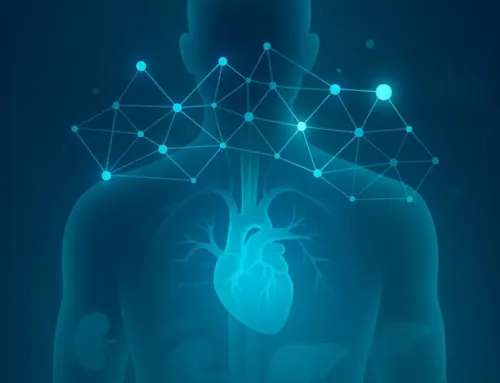
Approx. read time: 5.1 min.
Post: How Long After We Eat a Meal Should We Exercise and What Exercises Should We Do to Be Healthy
The Ideal time to exercise after eating is a crucial component of a healthy lifestyle, but the timing of workouts relative to meals is often a topic of confusion. Understanding when to exercise after eating, along with choosing the right exercises, can enhance performance, prevent discomfort, and optimize overall health benefits. This article explores the ideal timing for post-meal workouts and suggests exercises to incorporate into your routine.
Timing: When to Exercise After Eating
Immediate Exercise: Not Recommended
Exercising immediately after a meal is generally not advisable. Engaging in physical activity too soon after eating can lead to gastrointestinal discomfort, such as cramping, bloating, and nausea. This is because the body is directing blood flow to the digestive organs to process the food, rather than to the muscles used during exercise.
Light Exercise: 30 Minutes to 1 Hour Post-Meal
For light activities like walking or gentle stretching, waiting about 30 minutes to an hour after eating is usually sufficient. These activities do not require intense muscle engagement or heavy blood flow, making them safe and beneficial for digestion. A post-meal walk can help regulate blood sugar levels, particularly beneficial for individuals with diabetes.
Moderate to Intense Exercise: 1.5 to 2 Hours Post-Meal
For more strenuous activities such as running, weightlifting, or high-intensity interval training (HIIT), it’s best to wait 1.5 to 2 hours after eating. This allows enough time for the stomach to empty and minimizes the risk of discomfort. By this point, the body has partially digested the meal, providing a steady supply of energy for the workout.
Factors Affecting Timing
- Meal Composition: Meals high in fat and fiber take longer to digest than those high in carbohydrates. Adjust the timing based on the meal’s macronutrient profile.
- Individual Differences: Each person’s digestive system works at its own pace. Pay attention to how your body responds and adjust accordingly.
- Exercise Type: The intensity and type of exercise also influence the ideal timing. Less strenuous activities require shorter waiting periods.
Recommended Exercises for Health-Ideal time to exercise after eating
Cardiovascular Exercises
Cardio exercises are essential for heart health, endurance, and calorie burning. Here are some effective options:
- Walking: Suitable for all fitness levels, walking can be done almost anywhere. Aim for at least 30 minutes a day.
- Running: Great for cardiovascular health, running also helps in weight management and building lower body strength. Incorporate intervals to increase intensity.
- Cycling: Whether on a stationary bike or outdoors, cycling strengthens the legs and improves cardiovascular fitness. Aim for 150 minutes of moderate cycling per week.
- Swimming: A full-body workout that is easy on the joints, swimming enhances cardiovascular health and muscle tone.
Strength Training
Building muscle is crucial for maintaining a healthy metabolism, improving bone density, and enhancing overall strength.
- Bodyweight Exercises: Push-ups, squats, lunges, and planks are excellent for building muscle without equipment. These exercises can be modified for different fitness levels.
- Weightlifting: Using free weights or machines, focus on major muscle groups like the chest, back, legs, and core. Aim for two to three strength training sessions per week.
- Resistance Bands: These are portable and versatile tools that add resistance to movements, helping build strength without the need for heavy weights.
Flexibility and Balance
Flexibility and balance exercises are vital for overall mobility and injury prevention.
- Yoga: Combining stretching, strength, and relaxation, yoga improves flexibility, balance, and mental well-being. Practice for at least 20-30 minutes several times a week.
- Pilates: Focuses on core strength, flexibility, and posture. Pilates exercises are excellent for enhancing body awareness and stability.
- Tai Chi: A gentle practice that enhances balance, flexibility, and mental focus. Ideal for older adults and those seeking low-impact exercise.
High-Intensity Interval Training (HIIT)
HIIT involves short bursts of intense exercise followed by rest or low-intensity periods. This training method is effective for burning calories, improving cardiovascular fitness, and building strength in a short amount of time.
- Circuit Training: Combine strength and cardio exercises in a circuit format for a full-body workout. For example, a circuit could include jumping jacks, push-ups, squats, and burpees.
- Tabata: A form of HIIT with 20 seconds of intense exercise followed by 10 seconds of rest, repeated for 4 minutes. Effective exercises include sprints, kettlebell swings, and mountain climbers.
Creating a Balanced Exercise Routine-Ideal time to exercise after eating
To achieve optimal health, it’s essential to combine different types of exercise into a balanced routine. Here’s a sample weekly plan:
Sample Weekly Exercise Plan
- Monday: 30 minutes of running (cardio) + 15 minutes of stretching (flexibility)
- Tuesday: 45 minutes of weightlifting (strength)
- Wednesday: 30 minutes of cycling (cardio) + 20 minutes of yoga (flexibility)
- Thursday: Rest or light activity like walking
- Friday: 30 minutes of HIIT (circuit training)
- Saturday: 45 minutes of swimming (cardio) + 15 minutes of Pilates (flexibility)
- Sunday: Rest or light activity like Tai Chi
Tips for Safe and Effective Exercise-Ideal time to exercise after eating
- Stay Hydrated: Drink plenty of water before, during, and after workouts.
- Warm-Up and Cool Down: Always start with a warm-up to prepare your muscles and end with a cool-down to aid recovery.
- Listen to Your Body: Pay attention to how you feel during and after exercise. Rest if you experience pain or extreme fatigue.
- Consistency is Key: Regular exercise is more beneficial than sporadic intense sessions. Aim for a consistent routine that you can maintain long-term.
Understanding the optimal timing for exercise after eating and incorporating a variety of exercises into your routine can significantly enhance your health and well-being. By waiting an appropriate amount of time after meals and choosing exercises that suit your fitness level and goals, you can enjoy the benefits of improved digestion, enhanced energy levels, and overall better health. Remember to listen to your body, stay hydrated, and maintain a balanced routine to achieve the best results.









